How to Find the Right Employee Engagement Mobile App
- admin
- June 21, 2022
Employee engagement is one of the strongest drivers of productivity and retention. But businesses struggle to achieve strong engagement. Engagement levels have hovered around 30 percent (see below) for years, according to Gallup research, That means only 1 in 3 employees is engaged.
What is Employee Engagement?
Let’s start by looking at what engagement means. “Employee engagement relates to the level of an employee’s commitment and connection to an organization,” according to the Society for Human Resource Managers (SHRM). “Employee engagement has emerged as a critical driver of business success in today’s competitive marketplace. Elevated levels of engagement promote retention of talent, foster customer loyalty, and improve organizational performance and stakeholder value.”
How Does Employee Engagement Impact Retention?
The benefits of engagement are proven:
- Engaged employees are 87 percent more likely to stay at their company.
- They are 17 percent more productive.
- They make 40 percent fewer mistakes.
- Companies with engaged employees are 21 percent more profitable.
Then there is the cost of poor engagement.
- Gallup pegs the cost of low engagement at $500 billion.
- Low levels of engagement cost businesses 35 percent of each employee’s salary from lost productivity.
- Disengaged workers are absent 59 percent more than engaged workers.
Gallup has measured engagement for decades and said 2021 was the first year-over-year decline—from 36 to 34 percent. But even at 36 percent, that means 64 percent of employees are disengaged and dragging businesses down. That’s a problem. Gallup has been calling employee engagement a “crisis” since 2016, and it just got worse for the first time. Yet just 25 percent of companies have an engagement strategy.
Employee Engagement Apps
In response to the “crisis,” the demand for mobile apps to improve employee engagement has skyrocketed. The market for engagement apps reached $878.3 million in 2020 and will hit $1.9 billion by 2027, growing at a CAGR of 11.8 percent. The tools are mobile because we all know how excited we are about surveys—so much of the innovation is around making feedback mechanisms that are fun, responsive, and meaningful.
Most engagement apps aim to quickly and easily allow managers to understand what is working and not working by hearing from employees themselves. This article will look at some of the popular, innovative, and effective employee engagement apps and help you understand your options when it comes to features, benefits, and costs.
Best Employee Engagement App for Quick Check-ins: TINYpulse
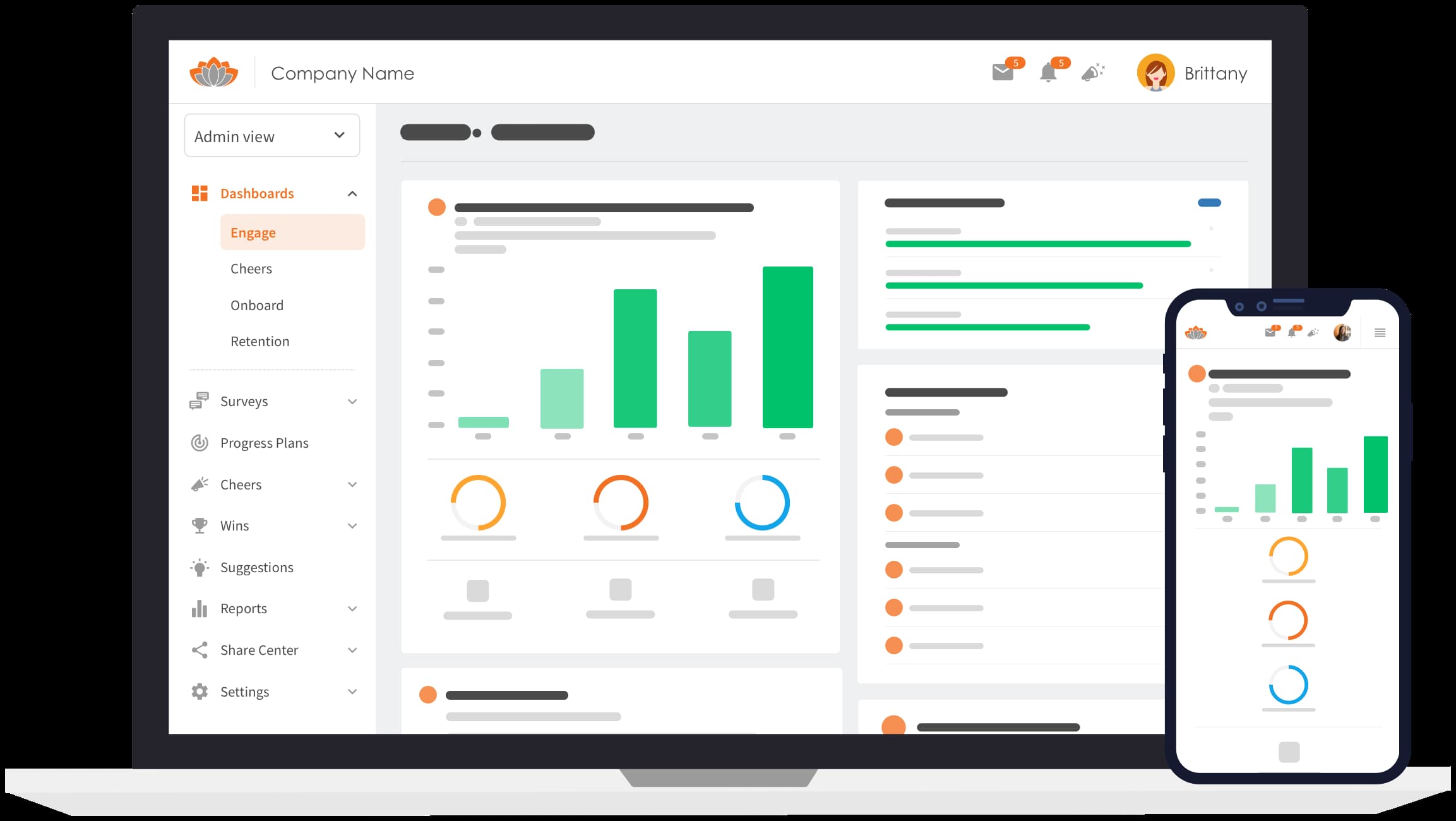
You have heard of pulse surveys—they are quick, short questionnaires meant, as the name suggests, to take the pulse of a company or team around a topic. But many managers do not know what questions to ask or how to interpret the results.
TINYpulse makes it easy to launch internal pulse surveys designed by organizational psychologists to ask the right questions and get data you can analyze and act on with confidence. The app also features a “Cheers for Peers” feature that lets employees give kudos to coworkers and across teams, which provides managers with a view of how well individuals and groups work together. Pricing is not published.
Best for Employee Engagement Mobile App for Peer-to-Peer Recognition and Rewards: Bonusly
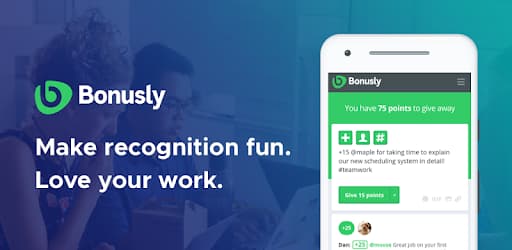
Have you ever been given a certificate for excellent work and wondered, “where’s the cash?” With Bonusly, you give employees a monthly allocation of points that they can gift to coworkers for jobs well done. Employees can spend those points in a Bonusly catalog and exchange them for gift cards or cash. The options range from Starbucks to Uber to nonprofit donations.
The gifts employees give one another appear in a team or company-wide feed so that everyone can see who and what actions win rewards. The goal is to foster trust and collaboration. You can set the criteria for rewards around company core values and business objectives and define what actions are point-worthy. You can also analyze the giving to assess whether you meet your behavioral and cultural goals. Pricing starts at $2.70 per user per month.
Best Employee Engagement Mobile App for Actionable Data: Culture Amp

One of the biggest complaints about employee surveys is that they rarely result in meaningful change, or the changes made are ineffective because they are based on subjective opinions. Like TINYpulse, Culture Amp offers templates with questions designed by organizational psychologists and takes it further with AI-driven analytics that gives actionable recommendations.
You can run surveys on chat, mobile, and desktop apps. Culture Amp collects answers, delivers results with heatmaps, bubble charts, or spreadsheets, and makes recommendations using its algorithms. Culture Amp continuously learns from all the companies using the app. For example, it can tell you who is at risk of quitting and recommend interventions based on historical and real-time data. Pricing is not published.
Best Employee Engagement Mobile App for Enterprise: Qualtrics
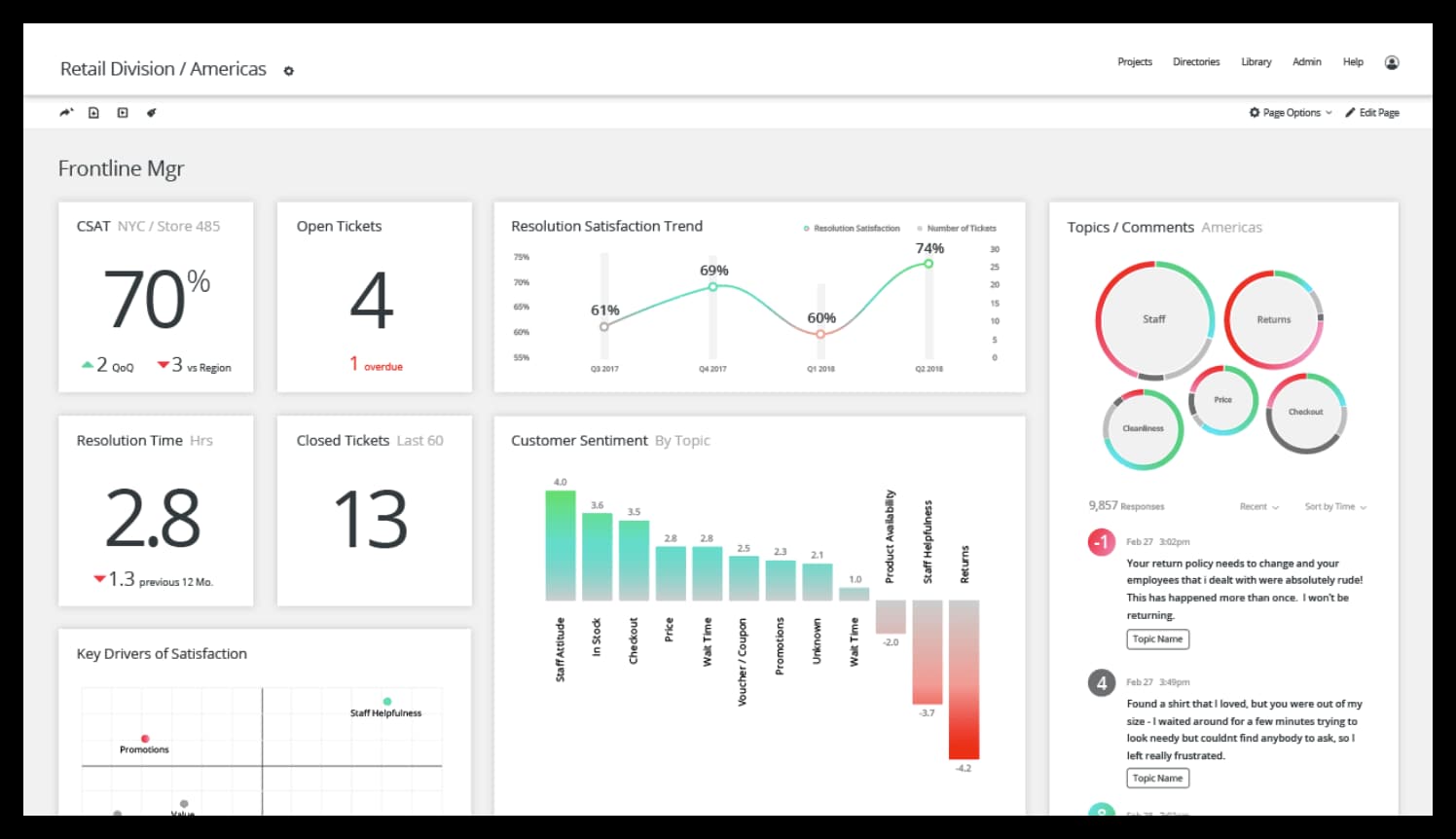
Qualtrics is the gorilla in the engagement app—calling its solution an app may be a disservice. You might call it an employee engagement listening engine. We include it here to show you what is possible. Not only does it support omnichannel survey delivery, but it also uses national language processing to analyze communications between employees downstream and upstream.
You can send surveys, turn “always-on,” listen to internal communications channels guaranteeing anonymity and get fine-grained data and recommendations in real-time. Qualtrics also offers customer survey and listening solutions that analyze everything from support calls to Yelp reviews and provide the same fast, specific advice for your customer support teams. Pricing is not published.
Best Employee Engagement Mobile App for Wellness: WeThrive
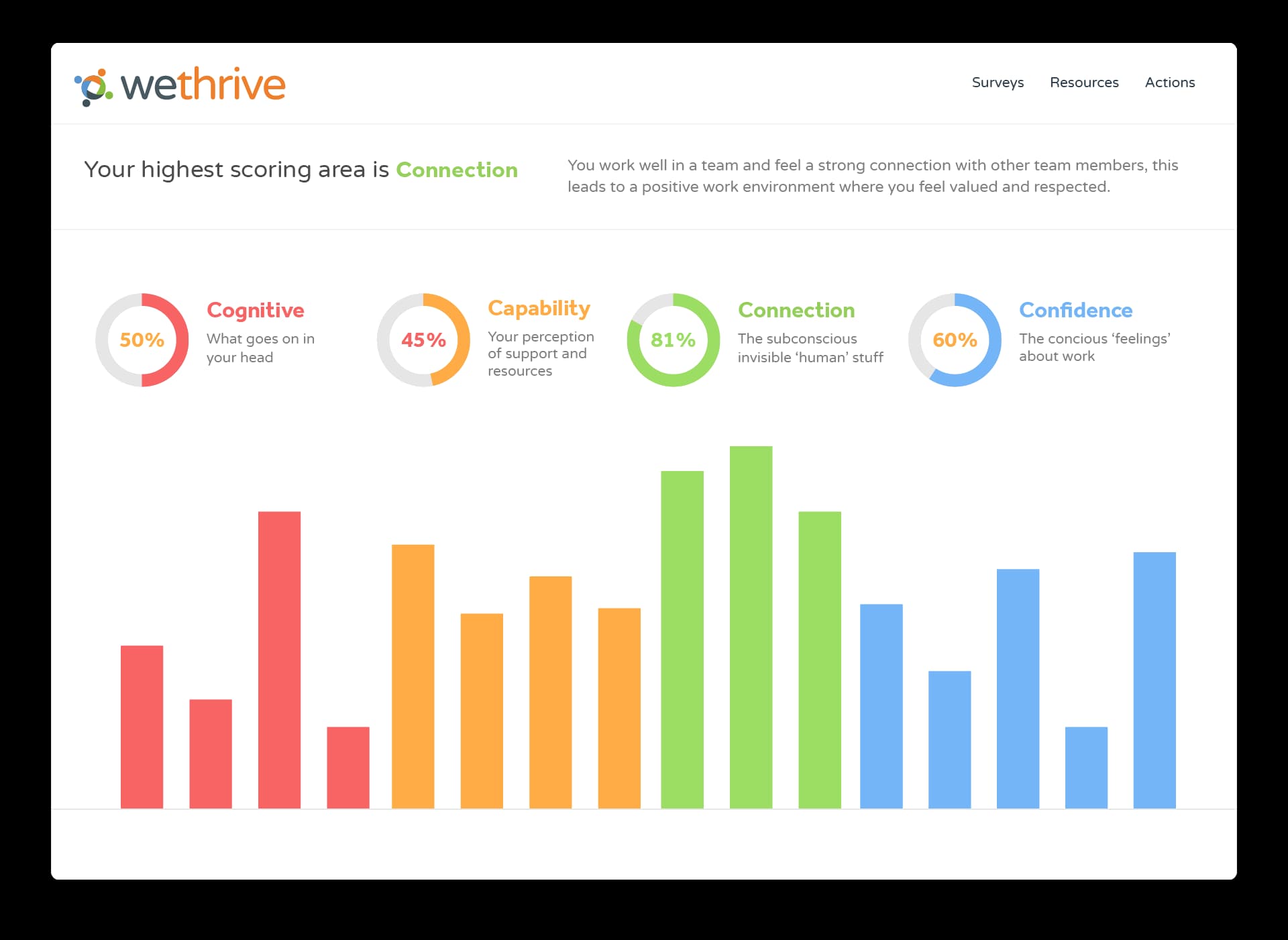
Engagement surveys and analytics may not give you a complete picture of your employees’ experience. WeThrive surveys help connect the dots between engagement, wellbeing, and DEEI. The app features surveys in each category to assess predefined dimensions of employees’ current state, compares current conditions to benchmarks and makes specific recommendations for situational and structural change.
The surveys examine the conscious and subconscious areas that impact people at work. Employees can take an evaluation survey in each of the three categories and get instant, personal feedback for improvement. They can also track and view their recommended actions, insights, and progress in personal dashboards. Best of all, WeThrive is free for up to 10 users.
Best Employee Engagement App for Managers: Officevibe
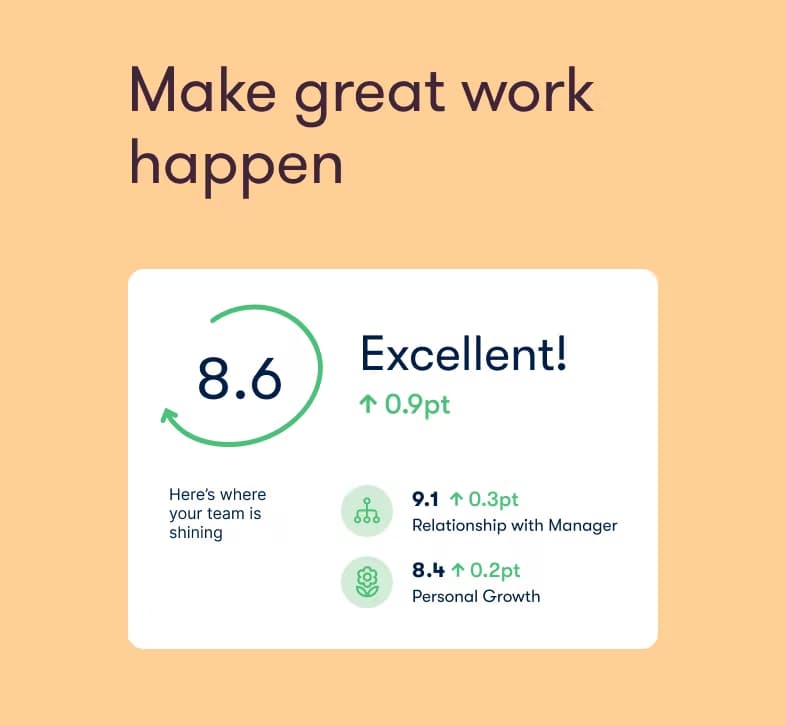
Most employee engagement mobile apps are built for HR and executive teams for company-wide surveys and assessments. Officevibe, while you might use it company-wide, is designed to help managers help their team grow and become better managers. The goal is to empower managers to engage with team members, cultivate trust, tackle challenges, and build strengths.
The app features multi-channel surveys in three areas: employee engagement where workers share their needs; a two-way one-on-one development app to create powerful, effective one-ones; and a manager growth app that gives recommendations to managers based on the outputs from their reports and general tips like how to have tough conversations. Officevibe is a Certified B-Corp and offers a free version of the app for up to 10 users.
Best Employee Engagement App for Frontline Businesses: Blink
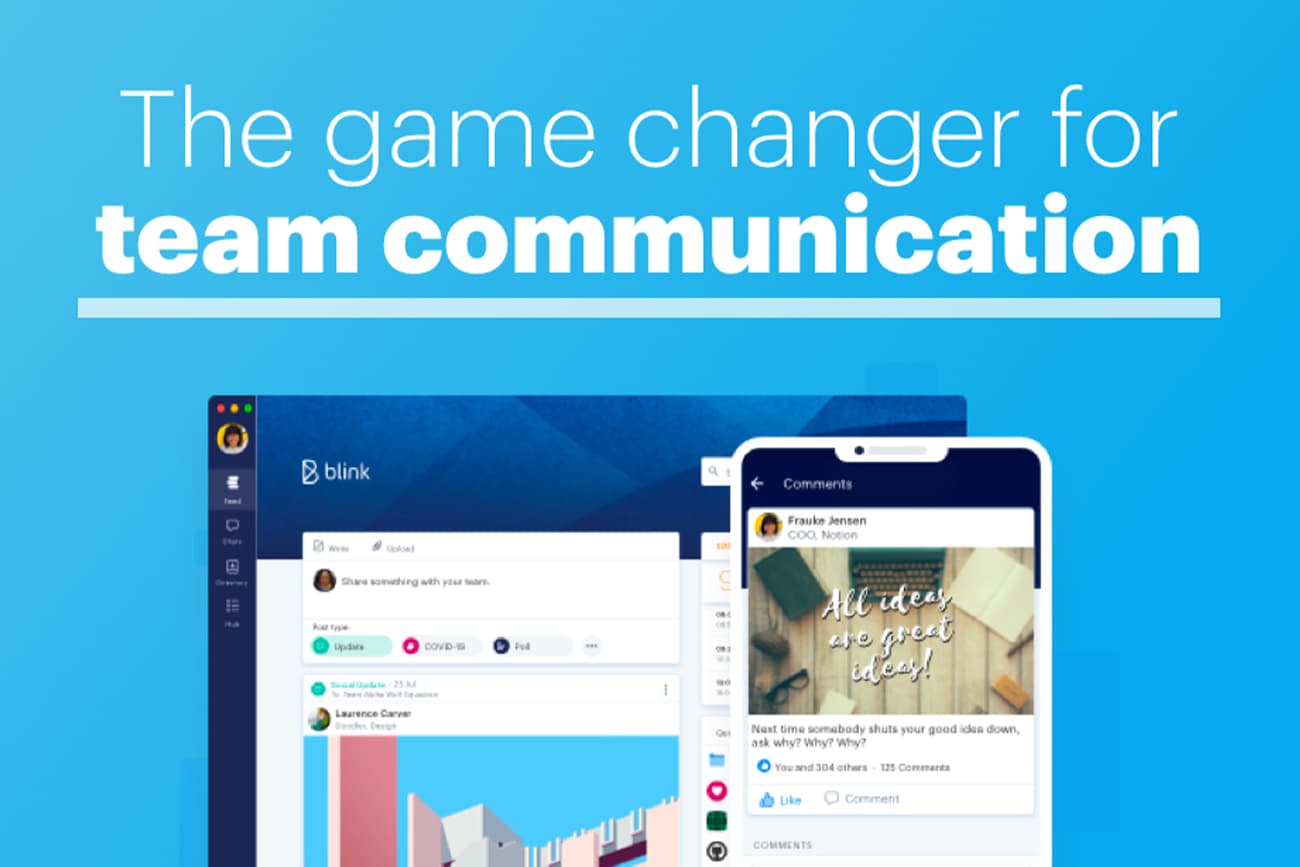
Few of the employee engagement mobile apps are for specific fields of work. While frontline work is a broad category, it is different from office work and has unique workplace stresses and challenges, as we have seen recently. Blink aims to help executives and managers stay close to frontline workers that are often offsite.
Blink puts the power of a desktop computer on mobile phones for deskless workers. Employee engagement is its goal in strengthening connections between frontline workers. They can access all their tools and systems and communicate in real-time through an integrated chat feed. Blink makes it easy for HQ managers to connect work with the company’s mission and vision with in-app communication. It offers surveys and polls to giving managers instant access to employee feedback. Pricing starts at $3.40 per user per month.
Simplest Employee Engagement Mobile App: Engagement Multiplier

If all the features of employee engagement mobile apps have your head spinning, you might want to look at Engagement Multiplier. The app starts with a ten-minute survey available on any device, scores your company, and gives feedback that provides immediate insights to guide your employee engagement program. After acting on your results, you can run the survey and see the impact of your actions.
The recommendations you get from Engagement Multiplier are a set of guides that offer tips on how to address areas where scores are low. The app also allows you to run customer surveys, offers graphic results like word clouds and sentiment scales, and enables employees to set up individual accounts to track their engagement. The pricing is also simple–$5 per user per month.
Most Fun Employee Engagement App: Trivia
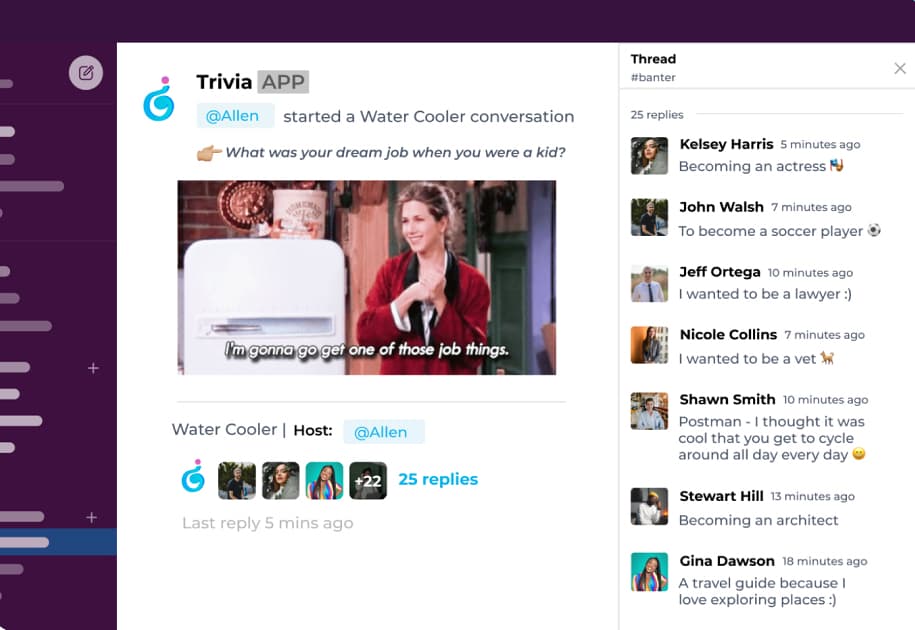
Do you like to play Wordle to bond with your friends and relatives? You will love Trivia. Admittedly superficial—there are no engagement assessments or recommendations for change. Trivia is a Slack app that makes it easy for employees to have fun together and build connections outside of work. Especially with remote and hybrid work, a little healthy competition can break the monotony and strengthen teams.
While you might think you will get tired of playing Trivial Pursuit repeatedly, Trivia has multiple one-on-one and team games. The app offers instant quizzes, true or false games, word puzzles, Pictionary, and more to give employees something fun to look forward to when they log into Slack. You can also create custom games that tie into your business and strengthen connections around your core values and business goals. Trivia has a free version for starters.
Alternative Ways to Measure Employee Engagement
Surveys are not the only tool in your toolbox for measuring employee engagement. You don’t have to invest in an AI-driven system that measures 12 dimensions of engagement and delivers a tailored action plan for each employee (that would be nice, though). Other tools for your employee engagement toolbox include:
- Employee Net Promoter Scores measure whether your employees would recommend your company to peers.
- Focus groups where you listen to a cross-section of employees share their experiences in their own words.
- Measuring retention numbers over time allows you to see how resignations are trending and if there is a point in time where a downward shift took place.
- You can do the same kind of measurement of absenteeism—looking for changes that might signal people have lost interest in their jobs.
- Review exit interviews–when employees are most honest about what they found lacking in their jobs and your company—they have little to lose and may want to vent.
- Hold “stay interviews,” a newish trend where managers ask top performers what would make them want to stay with or leave your company.
Something for Everyone
You can see that there are multiple flavors of employee engagement mobile apps. Finding the right one for your business depends on your engagement status, goals, budget, and tech stack (you can only use Trivia if you use Slack, for example). The stakes are high as competition for employees grows. It is easier than ever to measure, analyze, and improve your employees’ experience with these tools.
Managers Directly Impact Employee Engagement
Gallup found that executives account for 70 percent of employees’ engagement—more than a mobile app can make up. If executives are not engaged, their employees are not likely to be engaged either. A survey of 500 US executives found that they spend three-four hours per day “on administrative tasks.” And 44 percent said they are “frequently overwhelmed” by admin work.
Companies turn to managed virtual assistant services like Quickskill to free executives from the busy work that distracts them from focusing on strategic work, including developing their managers and staff. Offloading administrative tasks like calendar management, travel and expenses, email organization gives executives three to four more hours per day to focus on their core responsibilities to grow their business units and teams.
Quickskill is a managed virtual executive assistant service and has been helping executives and teams maximize productivity for more than ten years. Subscribe to our newsletter (see below) to get more information about workforce productivity, engagement, and retention.

